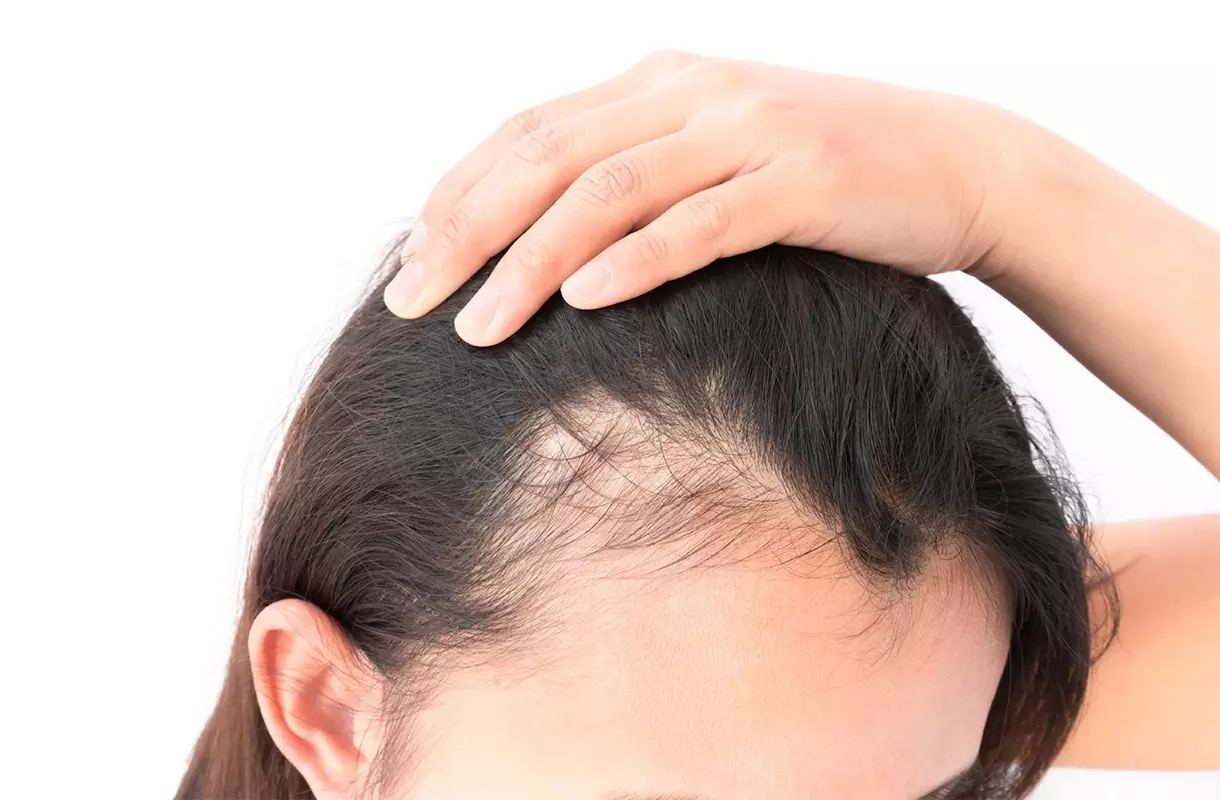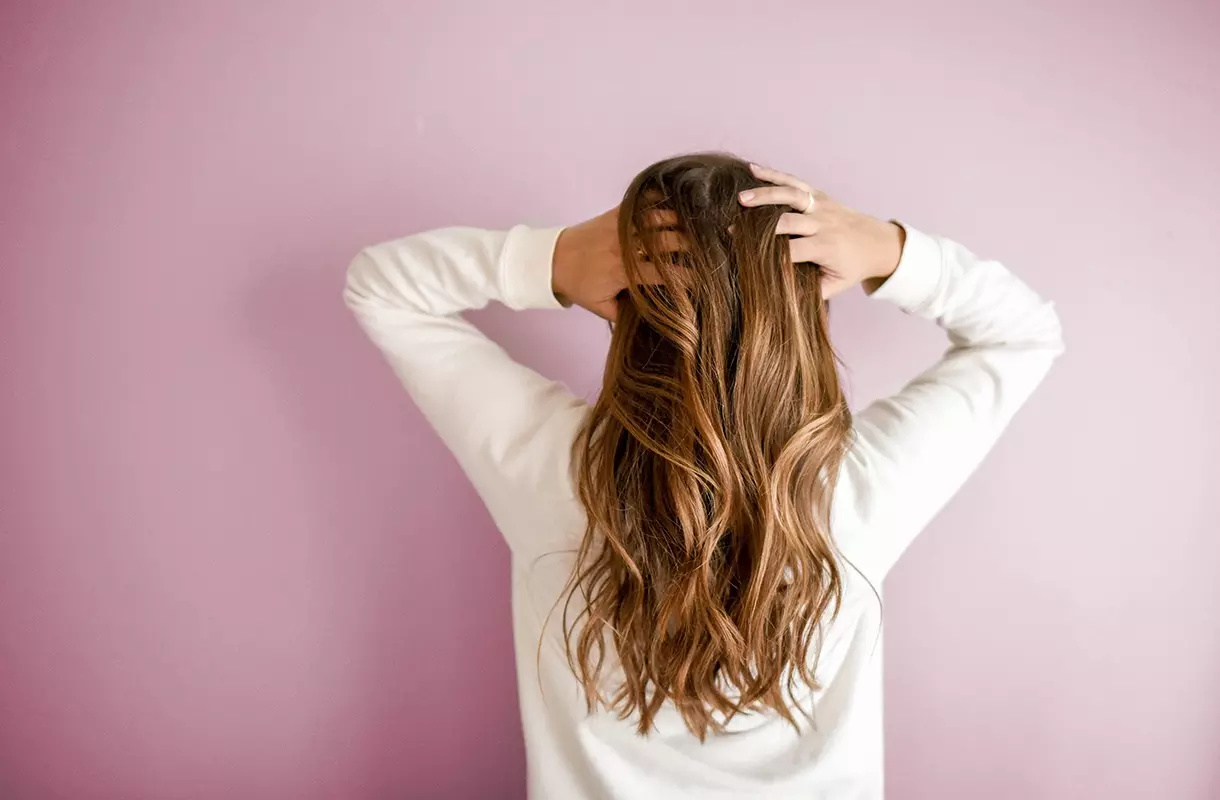Our hair loss consultations involve comprehensive examination and testing to get to the root of the issue. If the cause of your hair loss is unclear to Dr. Gray during your consultation, a biopsy is needed to confirm any suspicions he has. You can’t treat a problem unless you know what the problem is.
Why Do I Need a Biopsy?
As a doctor, Dr. Gray cannot adequately help you as a patient unless he treats the problem and a biopsy makes or confirms a diagnosis of “the type of” alopecia. It can also yield important information in cases of unexplained hair loss or when the potential for regrowth is in question. Understanding the reasons behind thinning or shedding hair is a critical part of the process. By determining the cause of hair loss, we can develop and implement the most effective treatment program tailored to each patient’s unique characteristics.
What is a Scalp Biopsy?
A scalp biopsy involves extracting at least two small specimens of scalp tissue and follicles for analysis. The specimens are smaller than the size of a pencil eraser. The specimens are then submitted to a skin pathologist with special expertise in diagnosing hair loss problems.
Pre Biopsy Instructions
- Medication: DO NOT take any NSAIDS, like Advil or Aleve beforehand. These will increase bleeding and make biopsy sites more difficult to close. You can take Tylenol.
- Cleansing Scalp: Wash your hair the day before or day of your biopsy.
- If you normally use topical camouflaging fibers (Toppik, etc) or other camouflaging agents (DermMatch, Couvre, etc), please do NOT apply these products before coming to your biopsy. These MUST be washed out of your scalp prior to arrival. Please do not apply hairspray, gel or mousse prior to your procedure. Cleansing helps prevent infection of the biopsy site.
- Hair System: If you wear a wig or hair system, you can remove it at our office, and can put it on again after the biopsy is over, before you leave our office.
Post Biopsy Instructions
- Each of the biopsy sites will have a stitch to close the wound. There will probably be a spot of dried blood at the suture. No dressing is placed at the time of the biopsy, but a small amount of antibiotic ointment will be put on the sutures. Keep the wounds dry the day of the biopsy. If bleeding should occur, apply 20 minutes of CONSTANT pressure.
- Neosporin will also be provided after the biopsy to use as a precaution preventing any infection at the biopsy sites.
- You can wash your hair the next day. Dry the area after the shampoo and put a small amount of antibiotic ointment on each site. It is crucial to let the wound seal.
- Medication: You may take Tylenol after the procedure. Numbing should wear off after two and a half hours or so, and we suggest taking Tylenol before the numbing wears off. Your scalp may be sore, but there should not be any pain.
Suture Removal
- After your biopsy, we will schedule an appointment for you to come back about 10 days- two weeks later to have your stitches removed. This appointment lasts about 10-15 minutes.
- During removal, each stitch is clipped with small scissors and the sutures quickly release and slide out. The biopsy site should not be noticeable after the areas heal, due to the small incision size.
- By the time of your suture removal appointment, we should have your diagnosis report back from the pathologist. During this visit, Dr. Gray will also go over your biopsy results with you to determine a personal treatment protocol.
What To Expect During Your Biopsy
Dr. Gray will perform your biopsy in his separate procedure room, which has a large comfortable chair and flat screen TV at eye level. You can get settled and focus your attention on the TV. Many patients find watching TV a very welcome distraction from the procedure.
After settling in, Dr. Gray will determine two places on your scalp from where to take a tissue sample. Dr. Gray defines where the active disease is and identifies two different spots that are least visible, but will yield the desired specimen, and records them with a marker on your scalp.
There are NO surprises with Dr. Gray, so after marking your scalp, he will inform you before he does anything else. He uses a tiny needle to numb the area of his first mark, biopsy A. The numbing agent works very rapidly, and Dr. Gray goes very slowly with this injection for good reason. The patient should feel only an initial prick at the beginning of the injection, and by going slowly, the numbing agent can be injected without causing much discomfort.
This numbing process is repeated for biopsy B, his second mark on your scalp. Dr. Gray will let you know before he starts injecting the numbing agent, and again, the patient should only feel an initial prick, and the area should be numb before the injection is complete.
Dr. Gray will wait a few minutes and ensure your scalp is completely numb before moving forward. After the two initial pricks of the numbing agent, you should not have any discomfort during the procedure. Some patients have felt a sense of "liquid" on their scalp, but this is just the numbing agent.
Patients often expect to feel Dr. Gray performing the biopsy, even after their scalp is numb, but are continually amazed when this isn't the case. There is no need to worry, as Dr. Gray is concerned about your comfort at all times.
Next, Dr. Gray takes a 4mm tissue sample (which is smaller than a pencil eraser) from location A, and uses a stitch to sew the incision back together. He then moves to location B and also takes a 4mm tissue sample (again, smaller than a pencil eraser), quickly sewing that small incision back together. At each biopsy site, he clips the stitches down as far as he deems possible to both close the wound, and hopefully ensure the stitches are not visible. After the location of biopsy B is quickly sewn together, he will clean the biopsy areas, and you are done!
Lastly, Dr. Gray will double check he has your correct contact information to send to the lab with your sample.
FAQ’s
Where are my tissue samples sent?
We work exclusively with a pathologist specializing in scalp and hair disorders in Birmingham, AL, Skin Pathology Associates. Your samples are Fed-Exed to his office for examination. A significant difference between HT&RC and other hair transplant practices, or some dermatology offices, is the pathologist used.
The pathologist analyzing tissue samples at other facilities is often why many discover scalp biopsies may not answer their questions. Our pathologist specializes in scalp and hair tissue analysis, and he requires tissue samples from two different scalp sites. He processes one sample longitudinally, and he processes the short axis of the second sample to determine a distinct cause of hair loss.
At other facilities, many times, if the pathologist doesn't specialize in hair and scalp tissue, the report for hair loss related scalp biopsy's lists generalized statements of “alopecia” with no specifics. Without describing the type of alopecia or providing necessary detailed information to determine the exact cause, a personalized treatment protocol cannot be created.
What happens after my biopsy results come in?
After obtaining the biopsy results, Dr. Gray will thoroughly explain the cause of the alopecia and all possible treatment choices to you at your suture removal appointment, developing a plan depending on the type of alopecia identified.
Will others notice I have had it done?
There will be a small amount of redness just in the area where the biopsy was taken. If there is some hair in the area or nearby, generally the area can be covered. If the area is completely devoid of nearby hairs, the biopsy site may be slightly visible. Generally, Dr Gray aims to take the biopsy from a site where the patient will be able to camouflage the area so that it is not noticeable to others.
When can I color my hair?
You may dye and color your hair one week after the biopsy.
When can I use hair products?
Product can be used on the scalp the very next day.
When can I swim after a scalp biopsy?
Swimming is okay after 5 days, provided on knows well the cleanliness of the pool/body of water. Otherwise wait 10 days.
When can I exercise?
You can exercise about three days after your biopsy. After a biopsy, we want to keep the area "clean and dry" and ensure the small sites have started healing before sweating more than usual.
Call Hair Transplant & Restoration Center for Your Personal Hair Loss Consultation
Not all patients require a scalp biopsy to determine the cause of hair loss and to choose the best treatment options. But the first step in discovering why you are losing your hair and what you can do about it is to schedule a hair loss consultation. We invite you to schedule a consultation at Hair Transplant & Restoration Center. To receive a personalized evaluation and treatment plan, contact us online or call our office directly.






